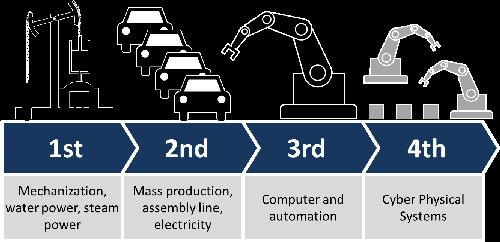Is the IIoT Getting Out of Control?
The Industrial Internet of Things may be going off the deep end in connecting everything on the plant floor. Some machines, bearings, or conveyors simply don’t need to be monitored -- even if they can be.
June 27, 2016
The Industrial Internet of Things (IIoT) may be going off the deep end in connecting everything on the plant floor. Some machines, bearings, or conveyors simply don’t need to be monitored -- even if they can be. We may be seeing the beginning of a backlash against connected everything. Advanced Technology Services -- a company that helps plants create condition monitoring systems -- is arguing that we’re over-connecting the plant.

(Source: allaboutlean.com)
When consumer electronics companies started to shift their manufacturing to Asia, they went over the cliff en mass. A few years later, electronics CEOs started to wonder whether the move to drop their manufacturing was wise. Not all companies saw their costs drop, and not all companies were able to maintain their previous quality level. We’re just beginning to see similar second thoughts about plant connectivity. “Just because you can monitor something doesn’t mean it makes sense. We look at each line, each machine, each function, and we ask, ‘If I monitor this, will it improve the process?’” Chris LeBeau, global IT director at Advanced Technology Services, told Design News. The answer is not always, yes.
We’ve all seen the predictions of the gabillion dollars that will be spent on an unfathomable number of connected devices by 2020 or 2030. Those numbers may indeed come true, but LeBeau suggests that assumption is overkill. “There is no shortage of hype around this space. People make long lists of what they want to monitor, but what do you get by monitoring everything?” he said. ”We have to go back to a more basic conversation with the people who work at the plant every day. What do they need to know? What data could help them if they had access to it?”
 Your Data. Get It. Protect It. Practical information on embedding sensors in 3DP, automation & inventory control, big data as a diagnostic tool, cloud storage and security risks, and more in the Industry 4.0: Smart Strategies for Data Collection and Protection track at Automation Technology, Sept. 21-22, 2016 in Minneapolis. Register here for the event, hosted by Design News’ parent company UBM.
Your Data. Get It. Protect It. Practical information on embedding sensors in 3DP, automation & inventory control, big data as a diagnostic tool, cloud storage and security risks, and more in the Industry 4.0: Smart Strategies for Data Collection and Protection track at Automation Technology, Sept. 21-22, 2016 in Minneapolis. Register here for the event, hosted by Design News’ parent company UBM.
LeBeau points to instances where you can connect tons of devices even if all that connectivity isn’t necessary. “Say you have a conveyor. If you connect every one of the bearings along the conveyor, will it work better? You can certainly monitor every bearing, or you can simply monitor how fast the belt moves. That alone might give you the useful information,” he said. “We‘re looking at how do we get the data contextualized so it’s useful.”
One of LeBeau’s strategies is to listen to plant personnel rather than going with his own instincts. “We put in key measurements to see what works and makes sense. As an IT guy, I don’t always know what an individual measurement means,” he said. “The experts at the plant will tell you what breakdowns surprise them. It’s up to the people running the machines to tell you what they need.”
READ MORE ARTICLES ON THE IIoT:
The plant experts also know what breakdowns cause the most damage. A focus on those vulnerabilities beats a focus on every device. “We have one plant where there’s a motor, and when it breaks down, it takes out five other parts. That’s the most important thing to monitor,” said LeBeau. “If you monitor the temperature of that motor, you can replace it before it breaks. A lot of that knowledge is on the ground in the plant.”
He also noted that you can’t treat every plant that same, since similar equipment might be used in dissimilar ways. “Each plant is built to produce certain products, and they may have common equipment. Yet they use that equipment differently,” said LeBeau. “We’re working to provide connectivity capabilities, and our conversation with plant workers comes down to what makes sense to monitor, how to analyze the data, and what actions need to result from the measurements.”
Rob Spiegel has covered automation and control for 15 years, 12 of them for Design News. Other topics he has covered include supply chain technology, alternative energy, and cyber security. For 10 years he was owner and publisher of the food magazine Chile Pepper.
About the Author(s)
You May Also Like


.jpg?width=300&auto=webp&quality=80&disable=upscale)


